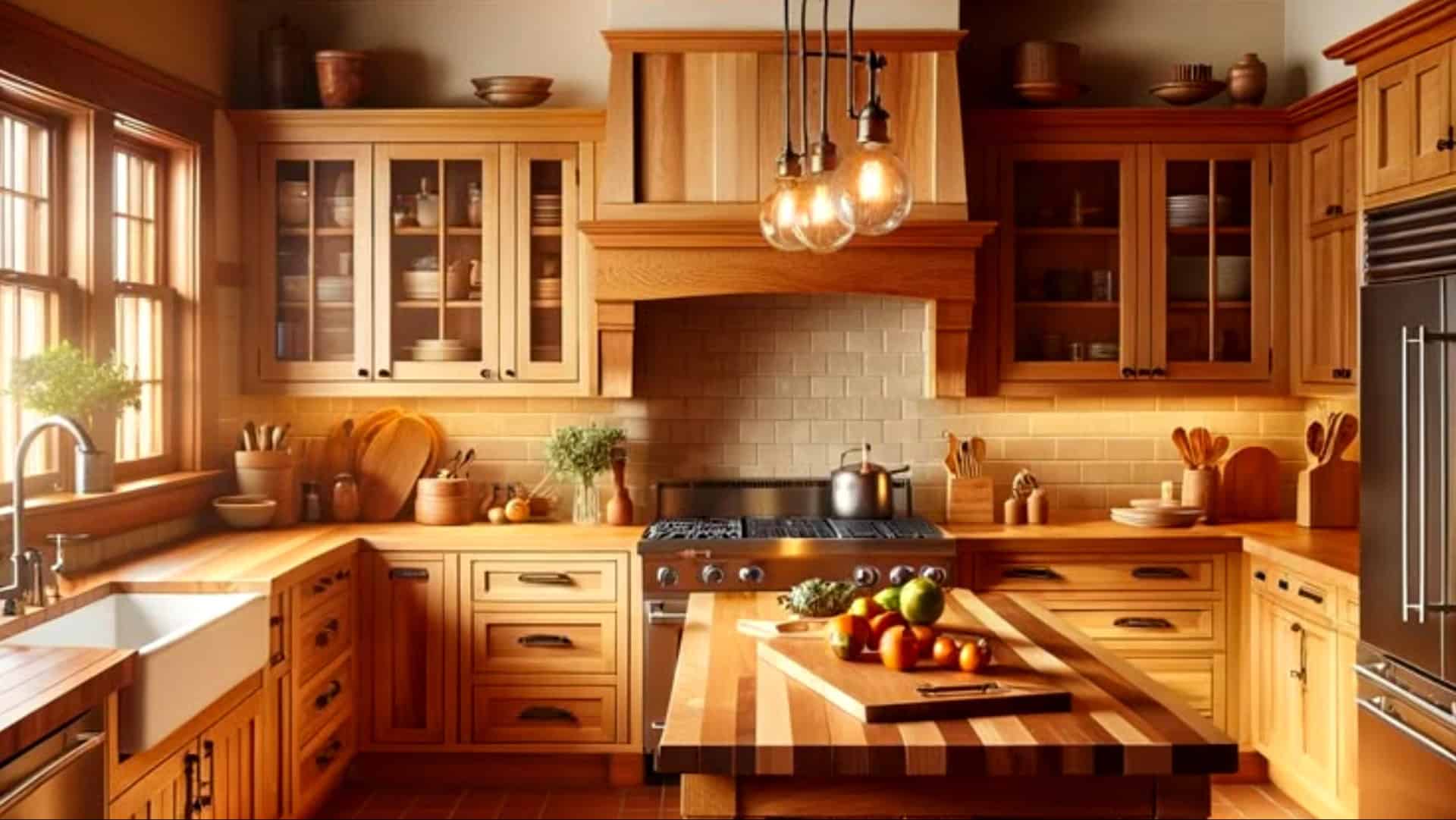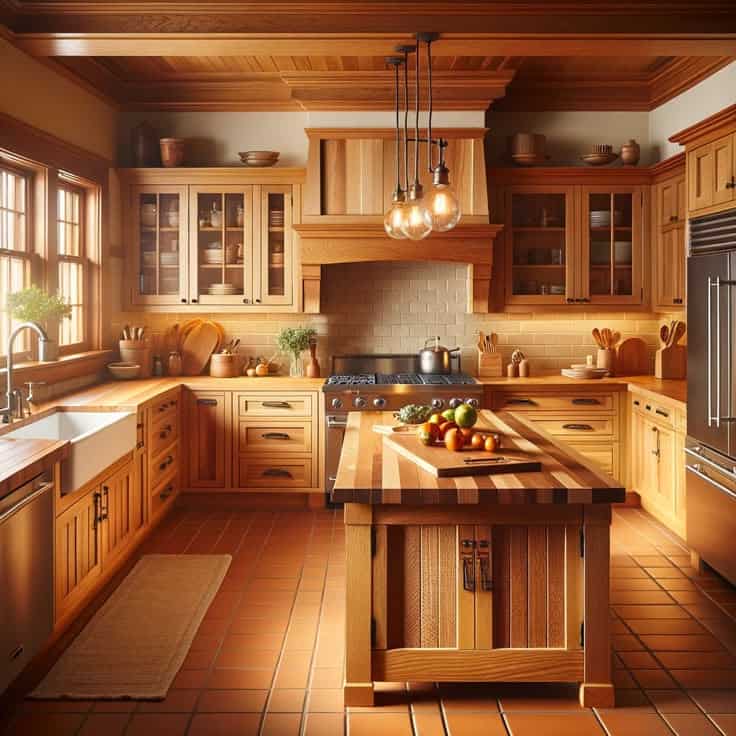Orange wood kitchen cabinets once dominated home design with their bold hues and warm tones.
From their rise in popularity to their gradual replacement by sleeker styles, these cabinets have a unique history.
This article explores 10 intriguing facts about the orange wood cabinet craze.
1. The Birth of a Trend

In the 1970s, orange wood cabinets became a hallmark of trendy kitchens. Their vibrant color added warmth and a bold statement to homes.
Many embraced this style for its ability to brighten spaces.
At the time, the color orange symbolized creativity and energy, aligning with the cultural shifts of the era.
Homeowners were keen to reflect these values in their interior designs, making orange wood cabinets a popular choice.
2. Peak Popularity
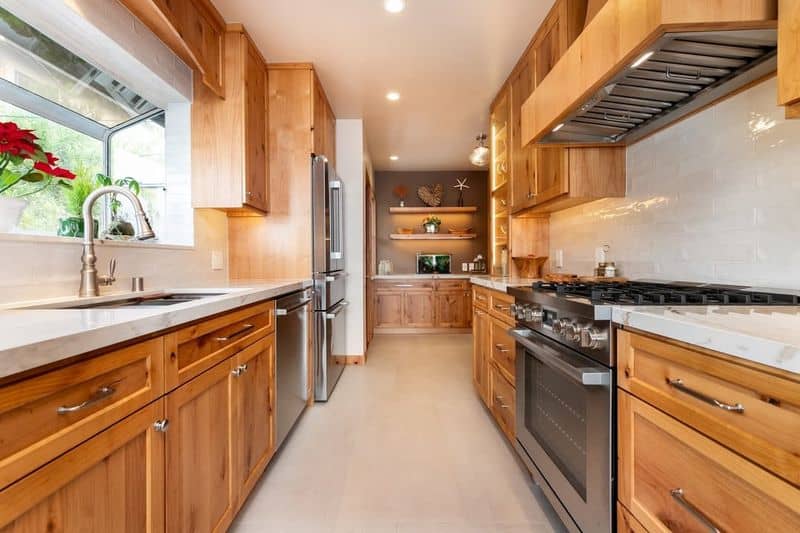
By the 1980s, orange wood cabinets reached the peak of their popularity. Their ubiquity was partly due to their affordability compared to other materials like oak or cherry.
These cabinets offered a modern look without breaking the bank, appealing to a wide range of homeowners.
The trend highlighted the era’s inclination towards bold, expressive colors, marking a significant departure from the more conservative tones of previous decades.
3. The Cost Factor
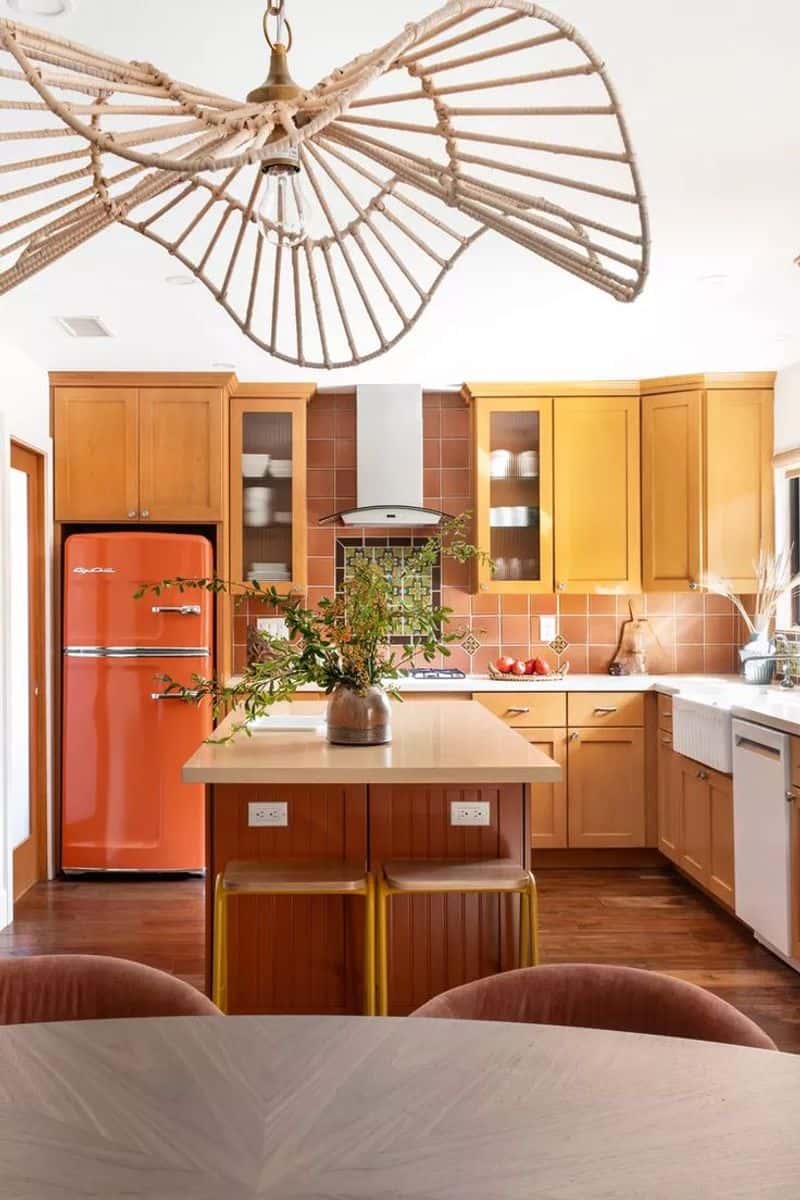
Orange wood cabinets were known for being relatively affordable, making them accessible to many. This cost-effectiveness contributed to their widespread adoption in home design.
While not the cheapest option, they provided a mid-range solution that balanced aesthetics and budget.
Homeowners appreciated this blend, as it allowed them to achieve a stylish look without overspending, a crucial factor during economic fluctuations.
4. The Material Mystery
The vibrant hue of orange wood comes from specific finishes and stains rather than the wood itself.
Typically, woods like maple or pine were used, which were then treated to achieve the desired color.
This process involved careful selection of stains that complemented the natural grain, enhancing the overall appearance.
The result was a unique, eye-catching cabinet that stood out in any kitchen, making it a favorite among design enthusiasts.
5. A Shift in Taste

As the 1990s approached, tastes began to shift towards more muted and neutral tones.
The boldness of orange wood started to feel dated as homeowners sought cleaner, more minimalist aesthetics.
This shift was driven by a growing preference for simplicity and elegance in design.
The emergence of new materials and finishes offered alternatives that aligned more closely with contemporary trends, leading to a decline in orange wood’s popularity.
6. Nostalgia and Resurgence
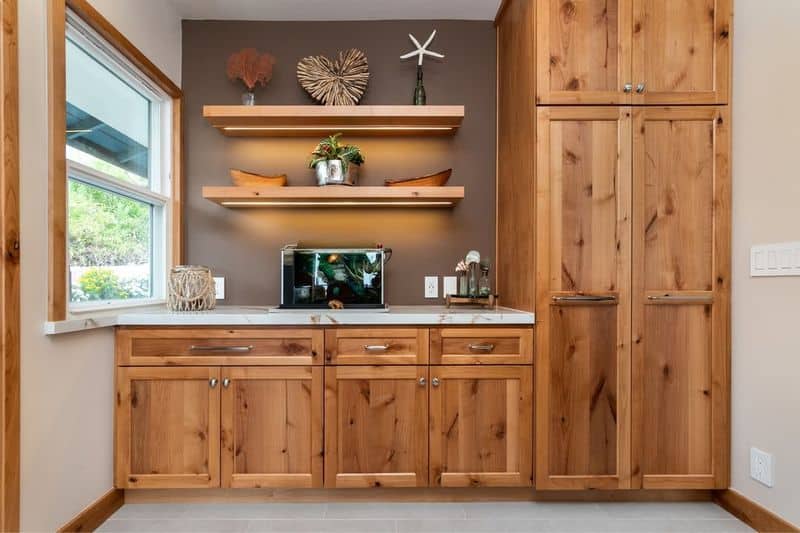
Despite their decline, orange wood cabinets have seen a nostalgic resurgence in recent years.
This revival is part of a broader trend embracing retro styles with modern twists.
Designers are creatively reinventing these cabinets, integrating them with contemporary elements to appeal to new generations.
7. Cultural Influence
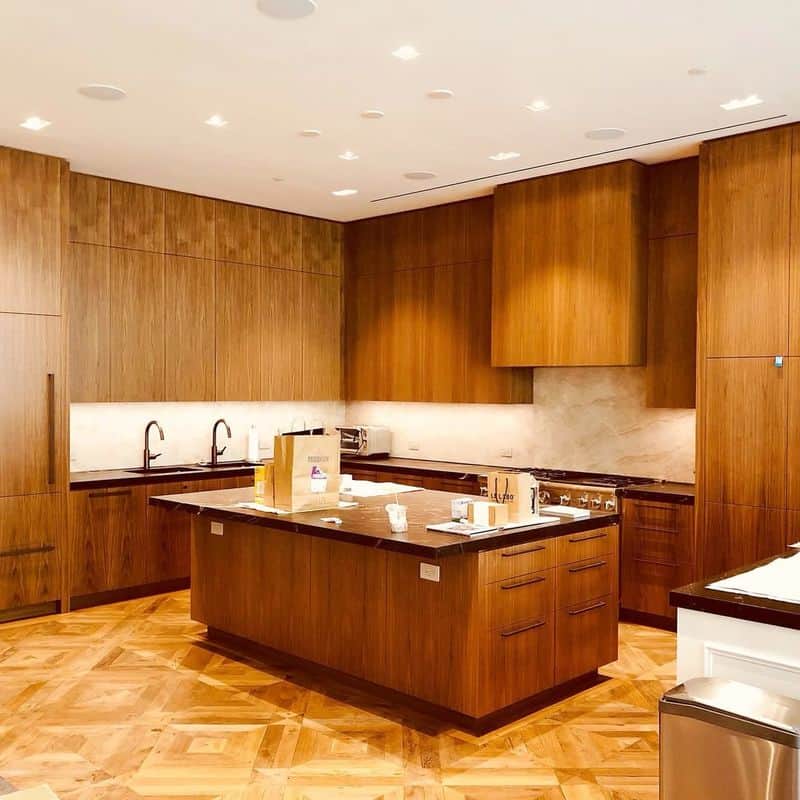
The popularity of orange wood cabinets was significantly influenced by cultural dynamics.
During the 1970s and 1980s, bold colors were celebrated across various design industries, from fashion to architecture.
This cultural embrace of vibrancy encouraged homeowners to experiment with colors like orange in their kitchens.
The trend reflected broader societal movements towards self-expression and individuality, making orange wood cabinets a cultural icon of their time.
8. Sustainability Concerns
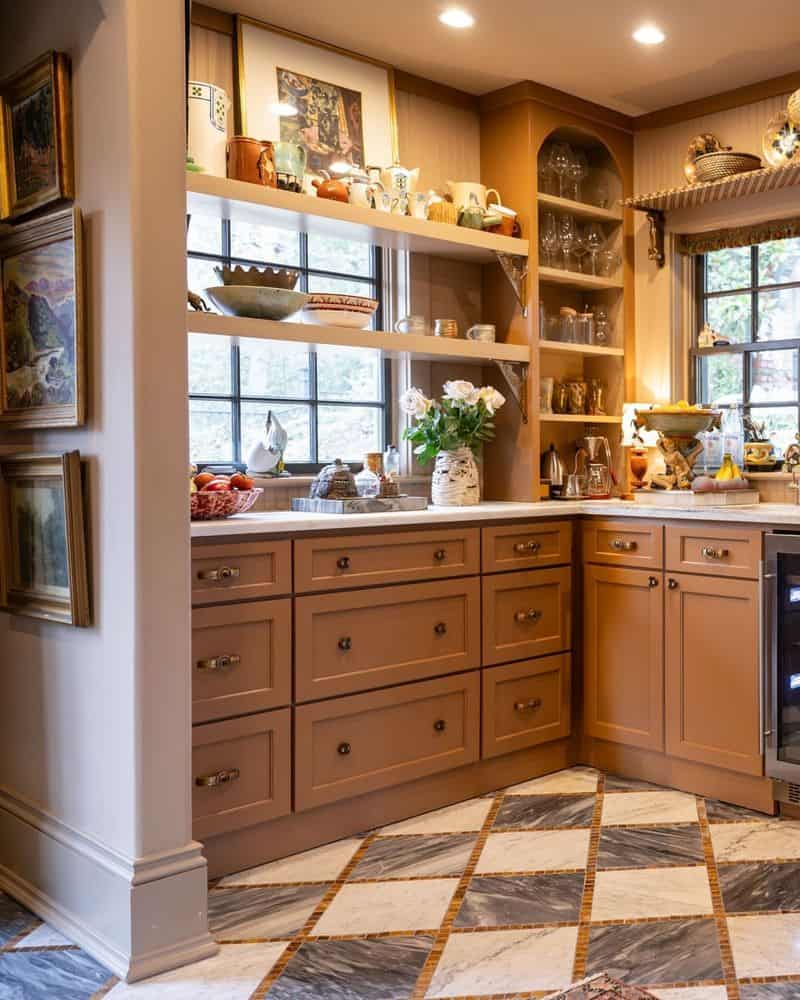
With modern concerns about sustainability, the use of materials for orange wood cabinets has come under scrutiny.
While the cabinets themselves were durable, the finishes used were not always environmentally friendly.
Today’s manufacturers are more focused on eco-conscious production, offering alternatives that are both stylish and sustainable.
This shift reflects a growing awareness of environmental impacts and a commitment to greener living in home design.
9. Modern Perceptions

Today, orange wood cabinets are viewed with a mix of nostalgia and skepticism. While some see them as a charming nod to the past, others critique them as outdated.
In the design community, they spark conversations about the cyclical nature of trends and how past styles can be reimagined.
This ongoing dialogue ensures that orange wood cabinets remain a topic of interest, illustrating the evolving relationship between design preferences and cultural context.
10. Actionable Design Tips
For those interested in incorporating orange wood cabinets today, a balanced approach is key.
Pairing these cabinets with neutral backgrounds or sleek hardware can modernize the look.
Consider updating countertops or backsplashes to create a cohesive style.
Embracing the bold color while integrating contemporary elements ensures the space feels fresh and inviting, offering a harmonious blend of nostalgia and modernity.

